




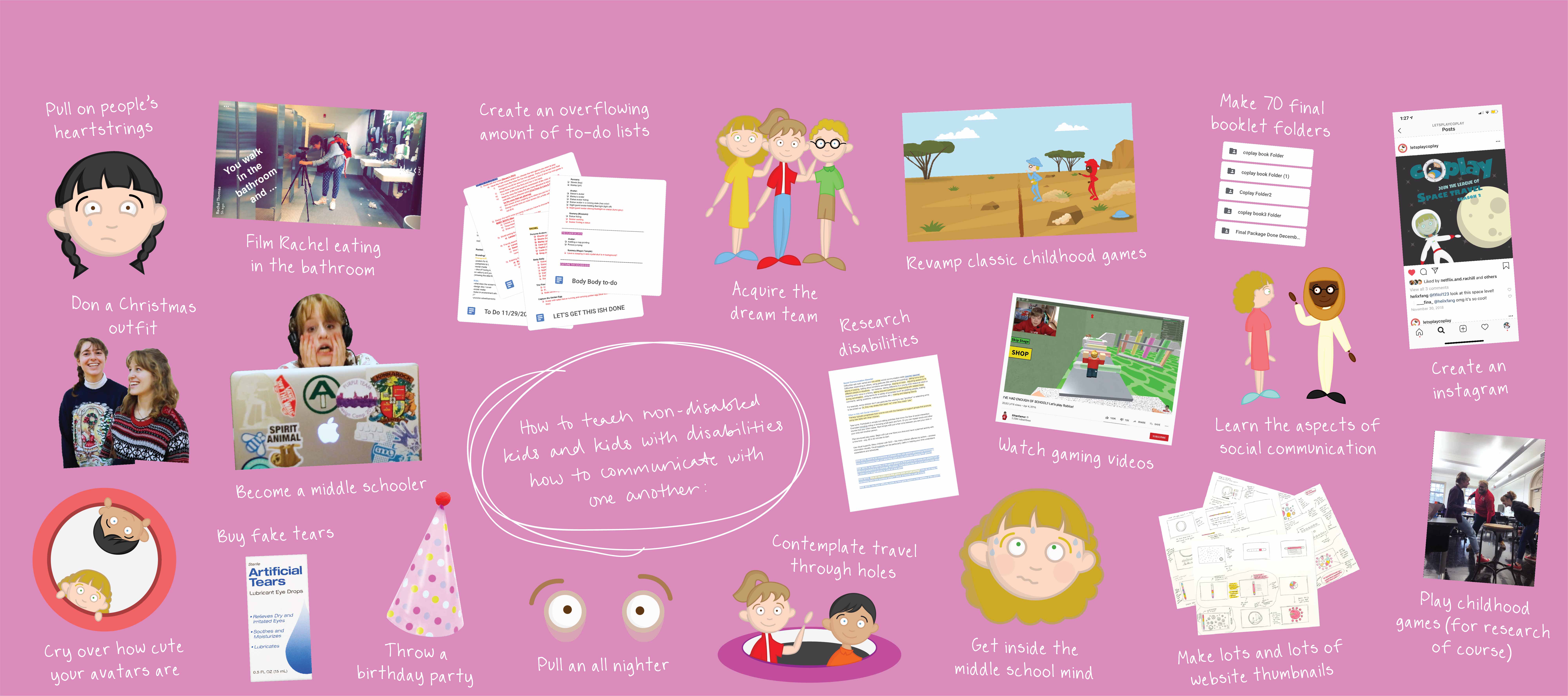
Fall 2018
inclusive
service
interaction
branding
videography
Kennedy Liggett
Joseph Rogers
Rachel Thomas
As a team, create a fully developed project proposal for a system that includes branding, interaction, and service design (with three touch points in each category).
In today’s society, ‘typical’ kids and kids with disabilities are often separated from each other at school, camps, sports, and other activities. This segregation has led to disabled children feeling isolated and has contributed to their difficulties with social communication and interacting with kids their age.
Coplay is a video game that brings kids together through a virtual world of interactive mini games. Each mini game focuses on social communication in a subliminal way and a player’s success is reliant on their ability to communicate with a partner.

I began by brainstorming areas of interest. Since the project was so open ended, I wanted to work in a space I was passionate about, resulting in many of my ideas revolving around kids and disabilities.
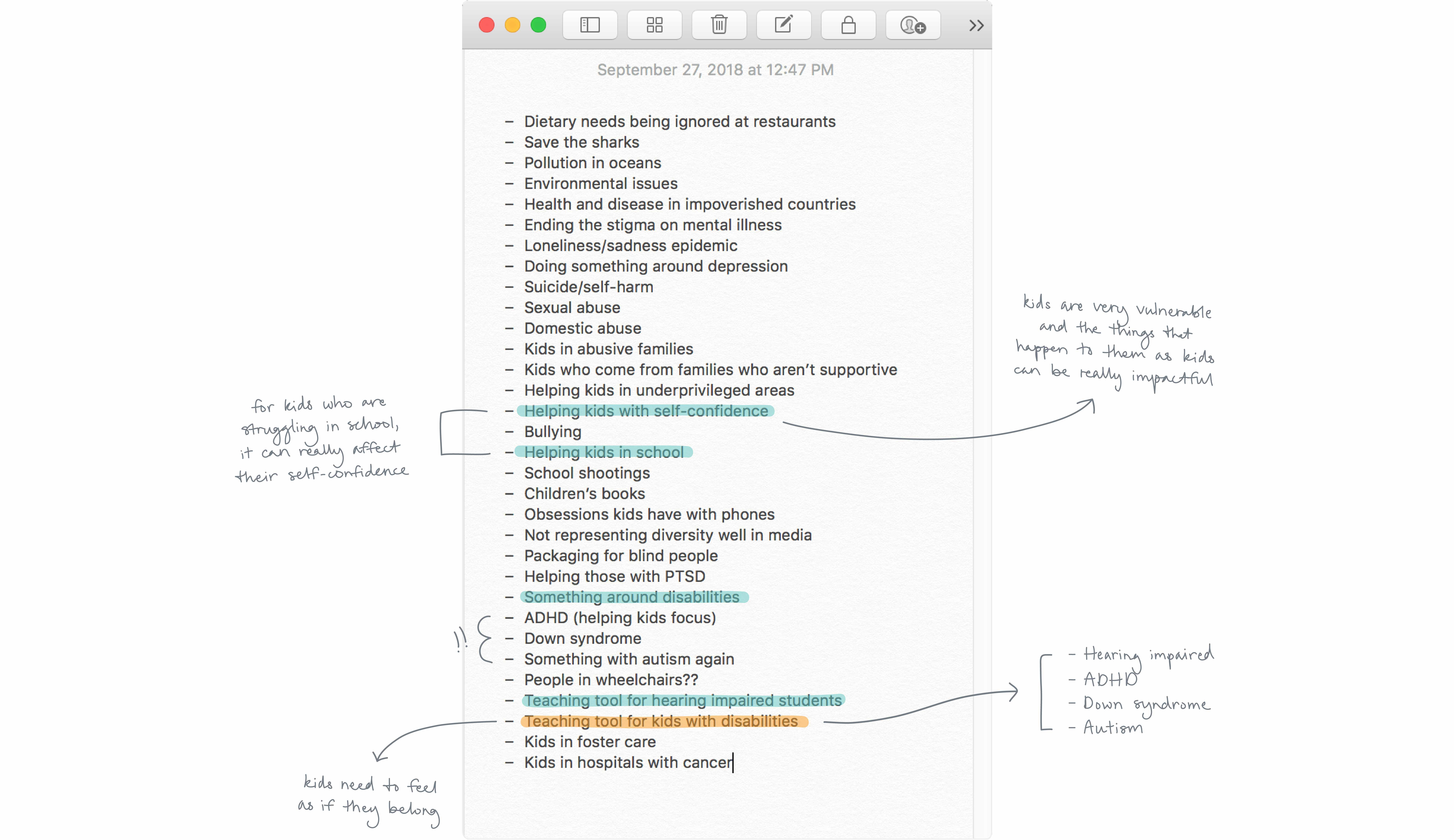
After teaming up and doing some research, we found kids with disabilities are often isolated from their peers. We thought this was due to ’typical’ kids and kids with disabilities being in separate classrooms, so we wanted to design a tool to mediate that. But after taking a step back, we realized there was a bigger issue at hand.
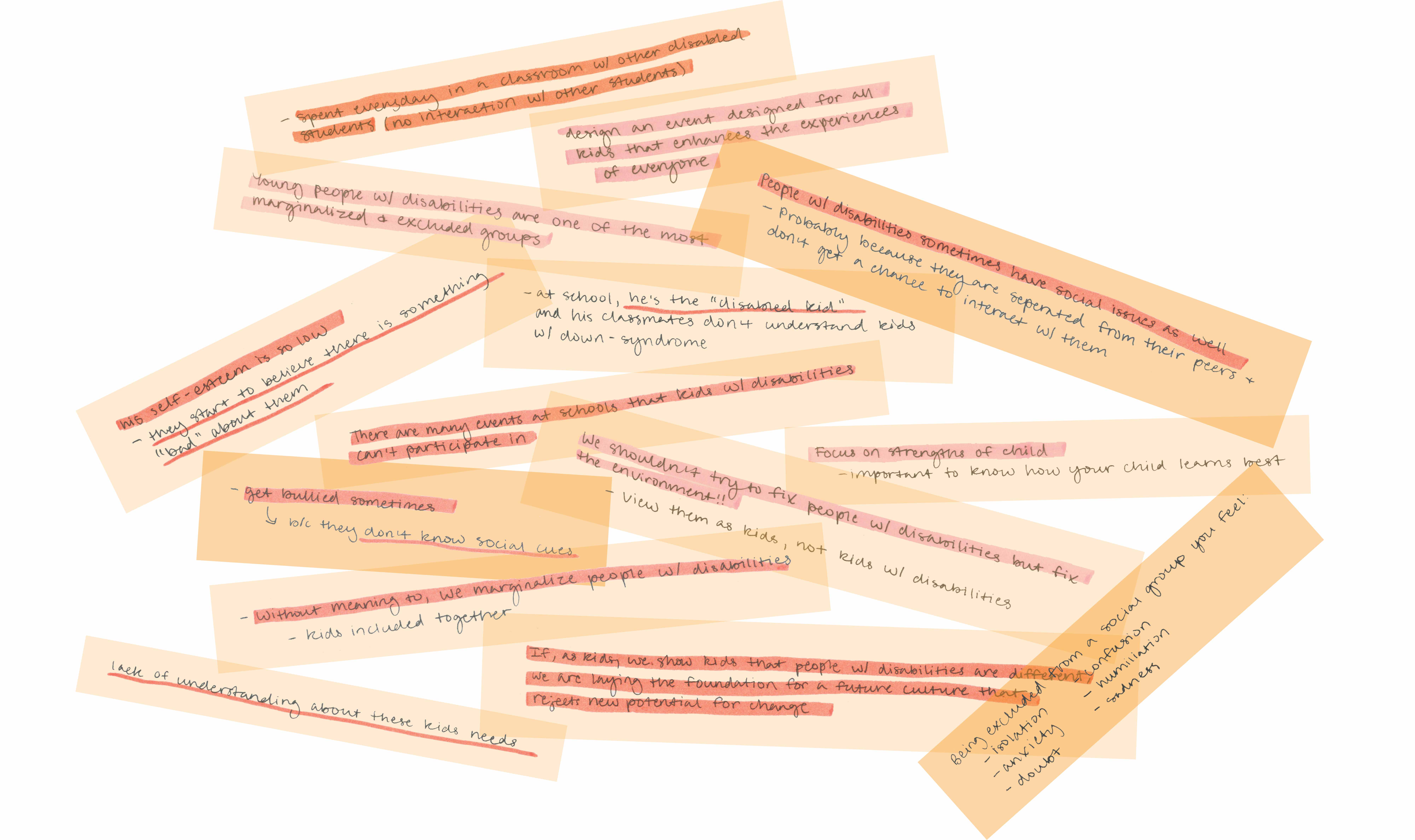
After taking a second look at our research, we found that many kids with disabilities are socially isolated because they lack proper communication skills. Feeling this was the real problem, we began researching different disabilities and how they struggle socially. We then highlighted similarities between the disabilities and combined them into six personas we felt accurately represented the group.
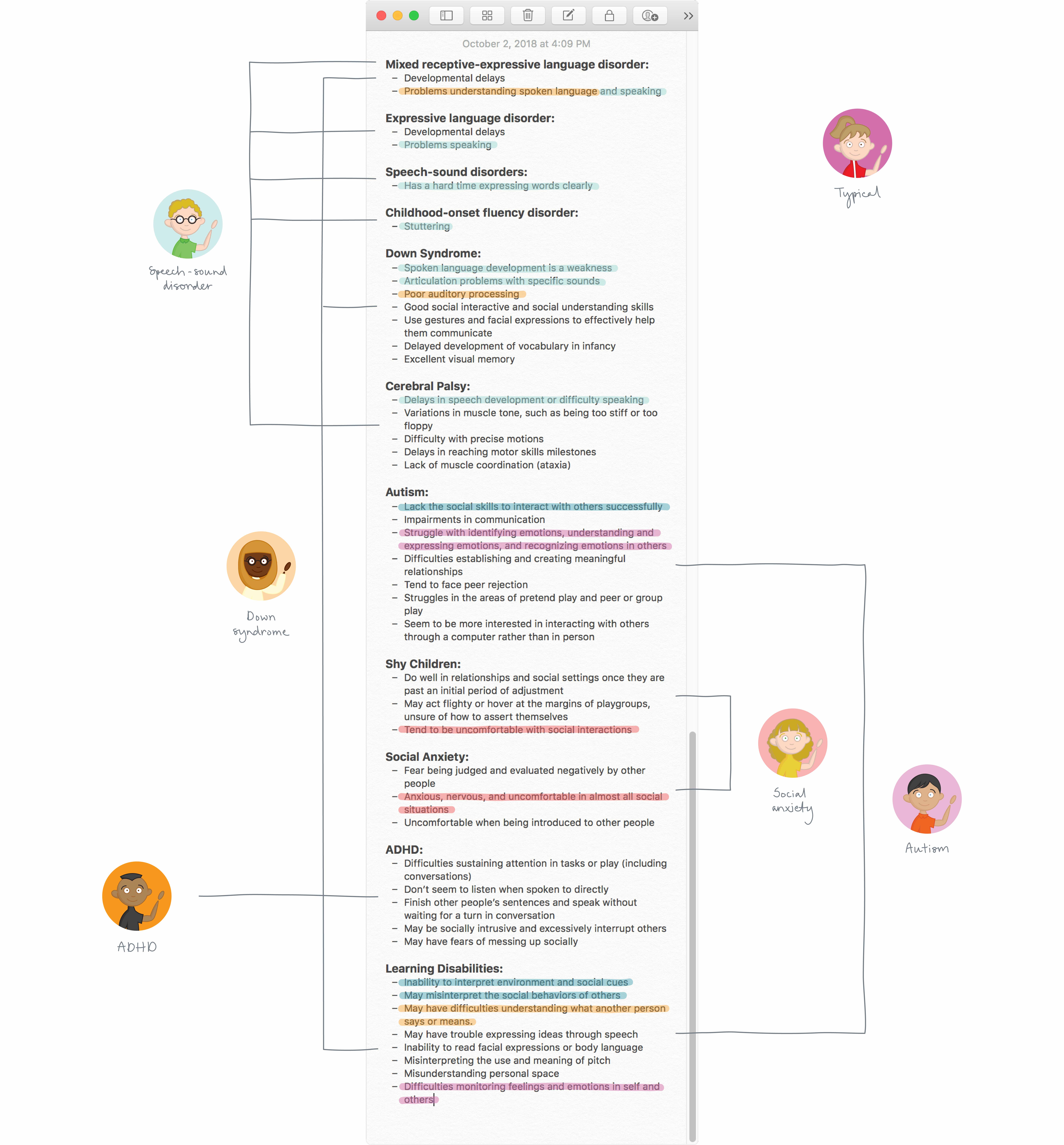
We then researched the different aspects of social communication. (Hover over each one to learn what it entails)
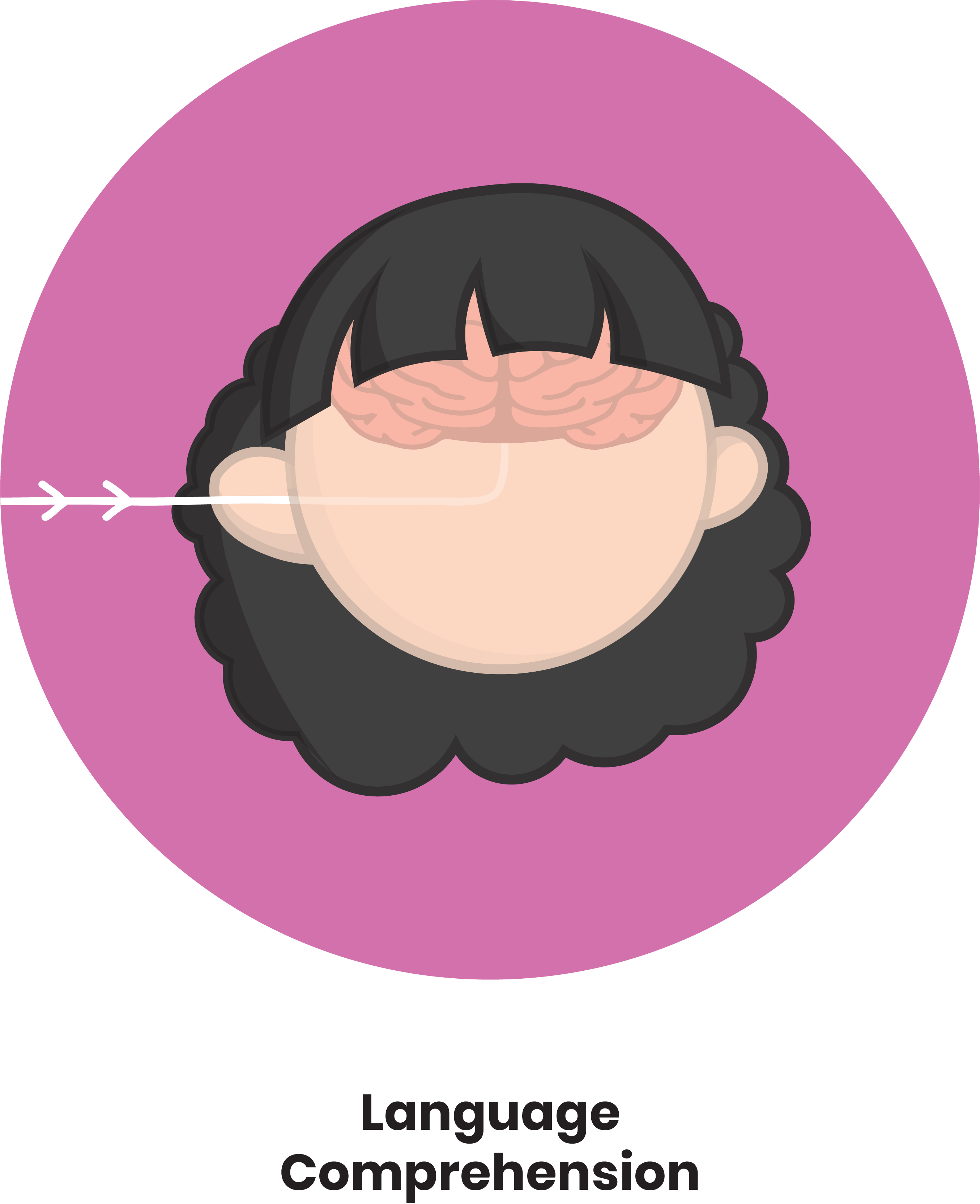
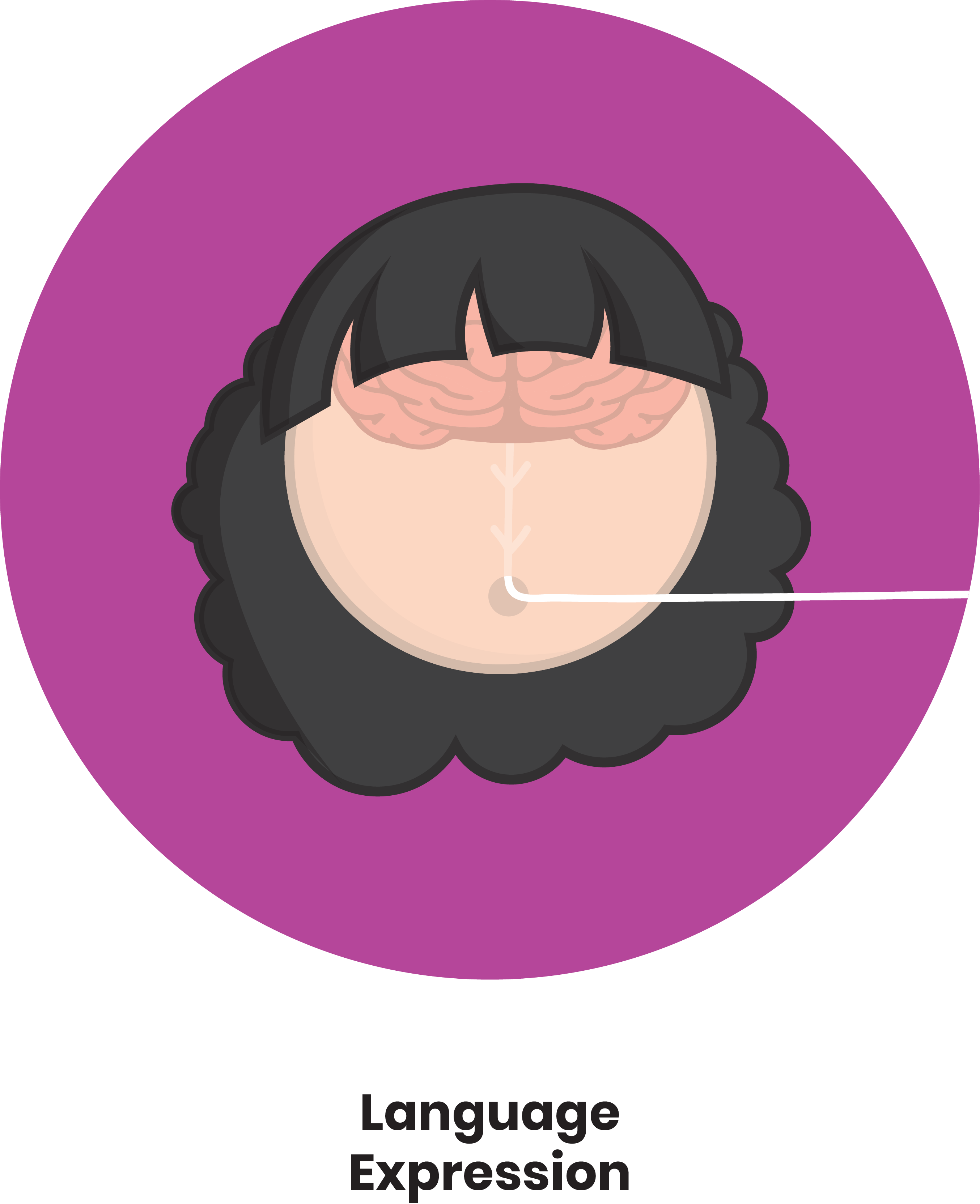
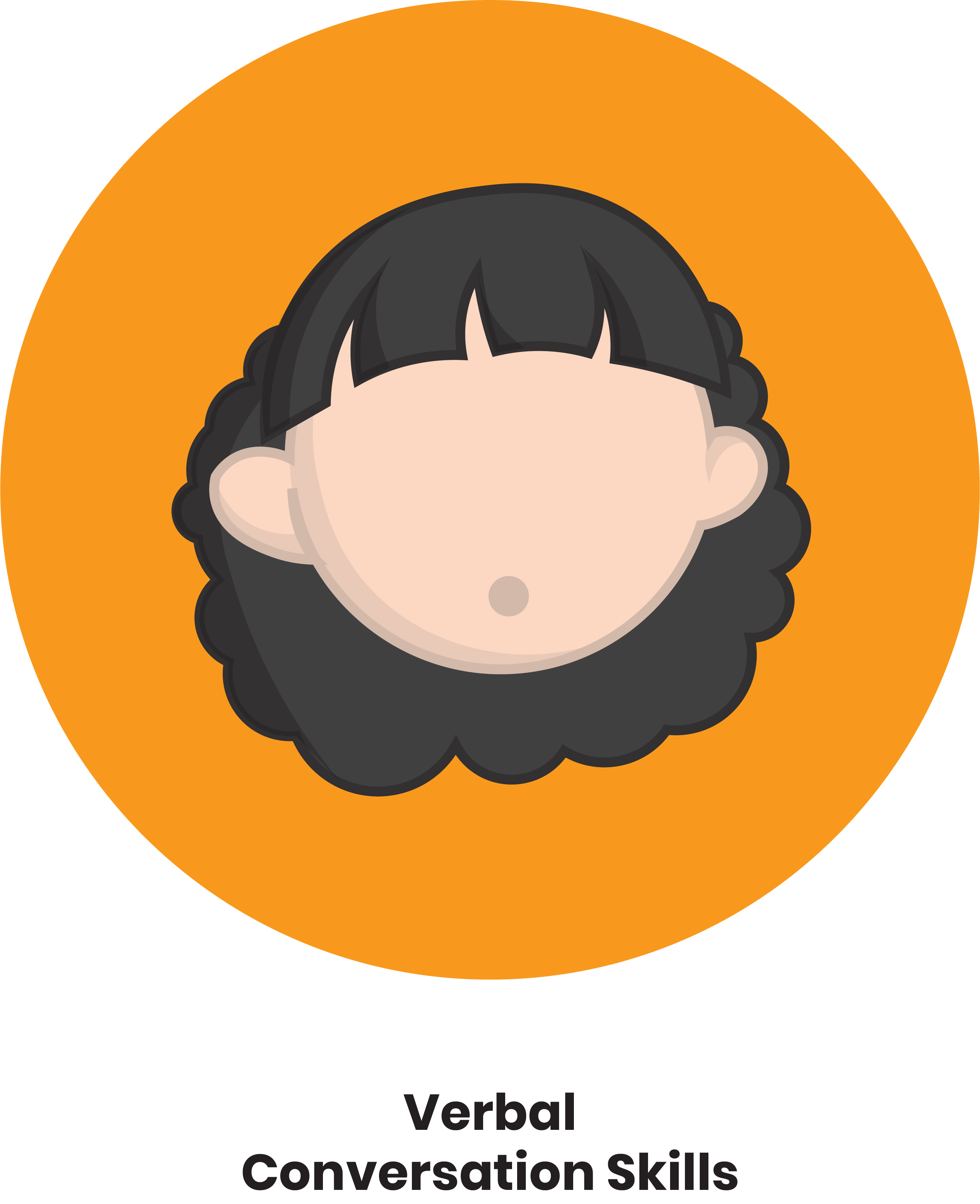
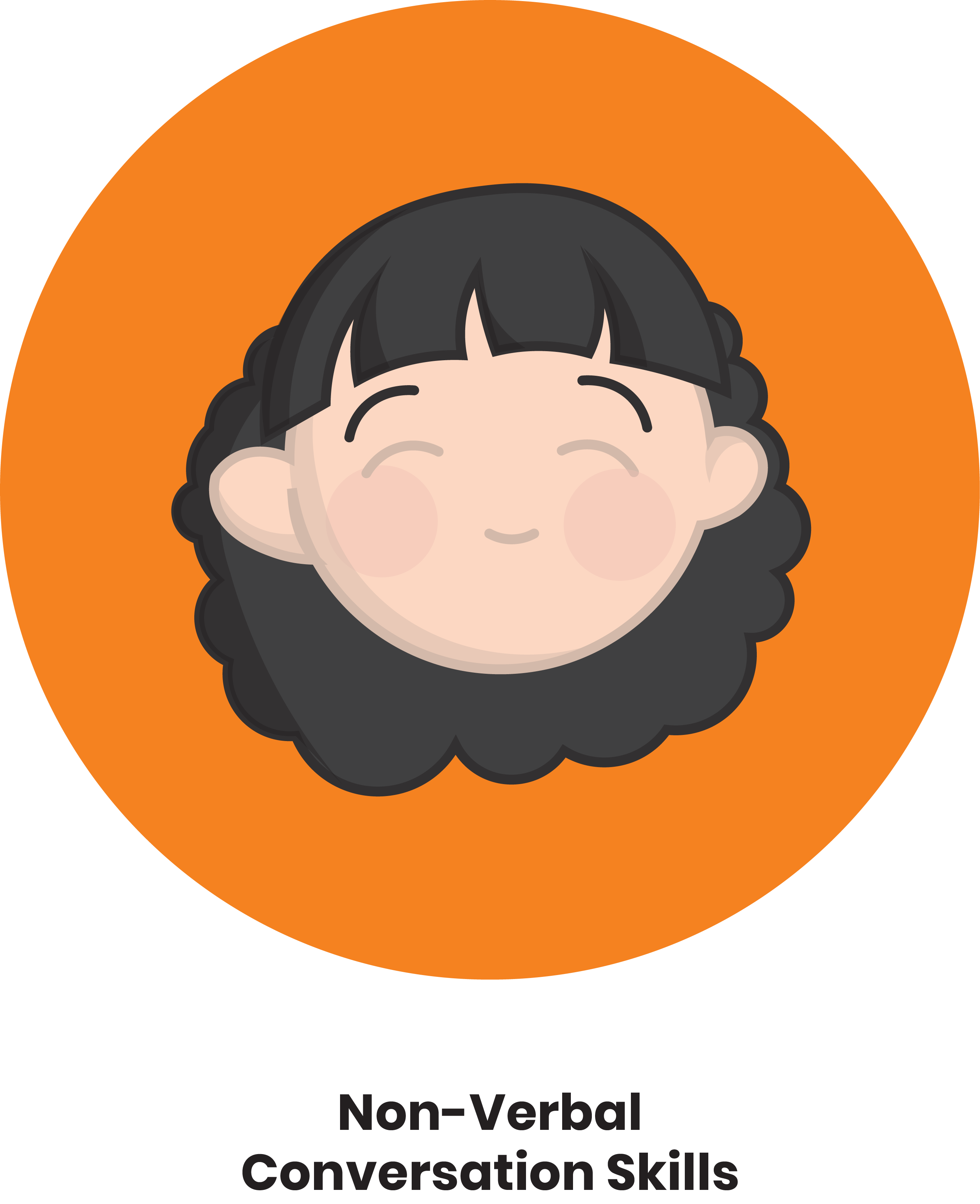
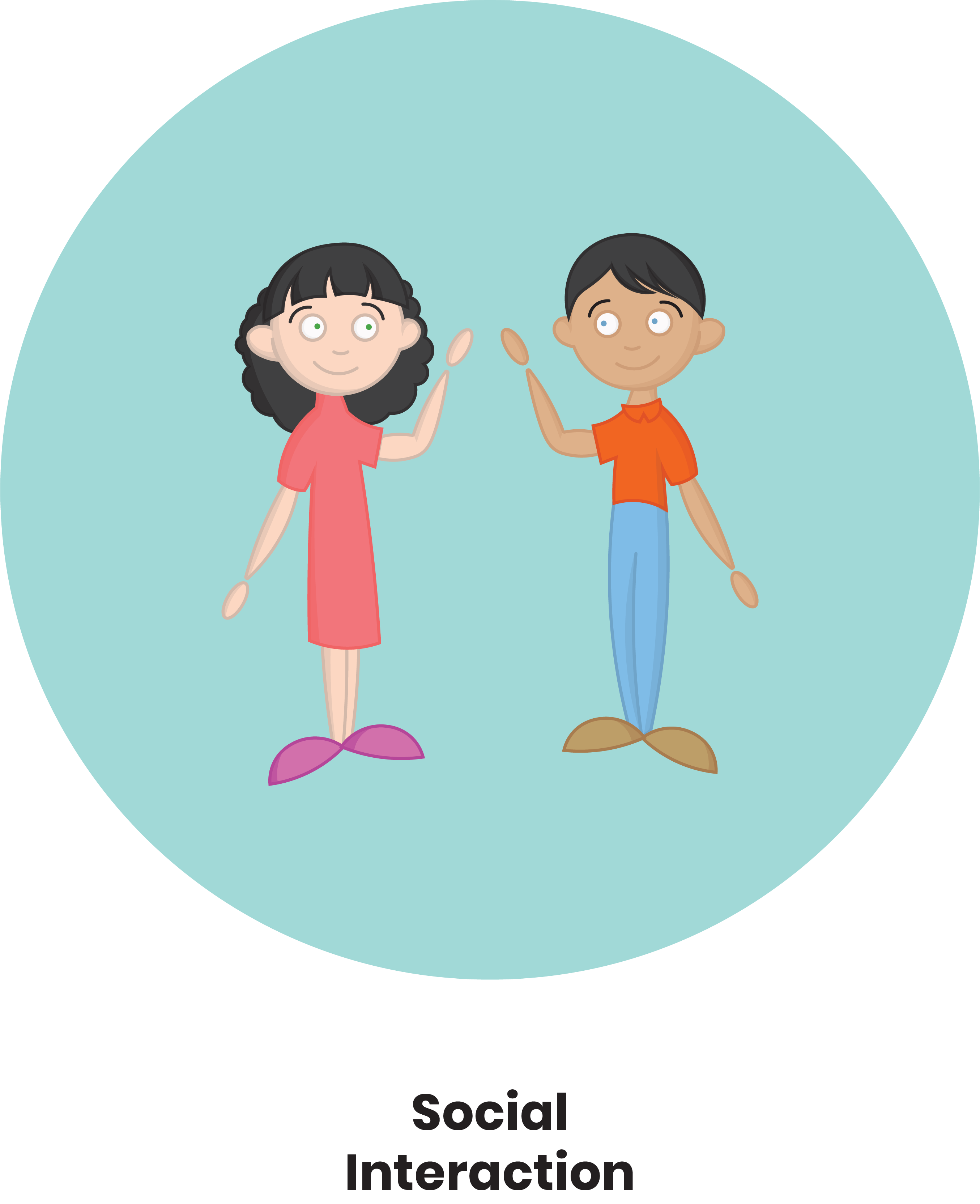
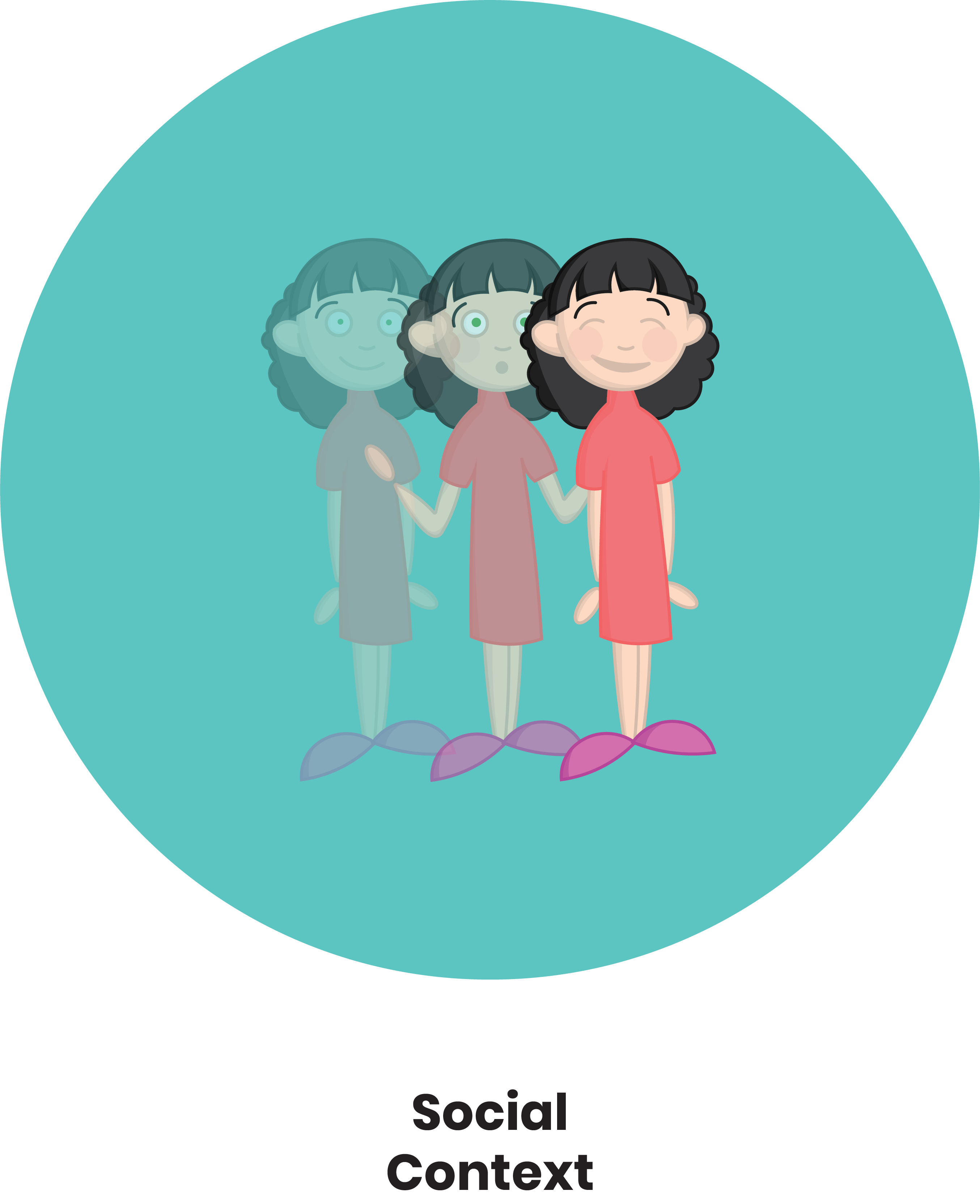
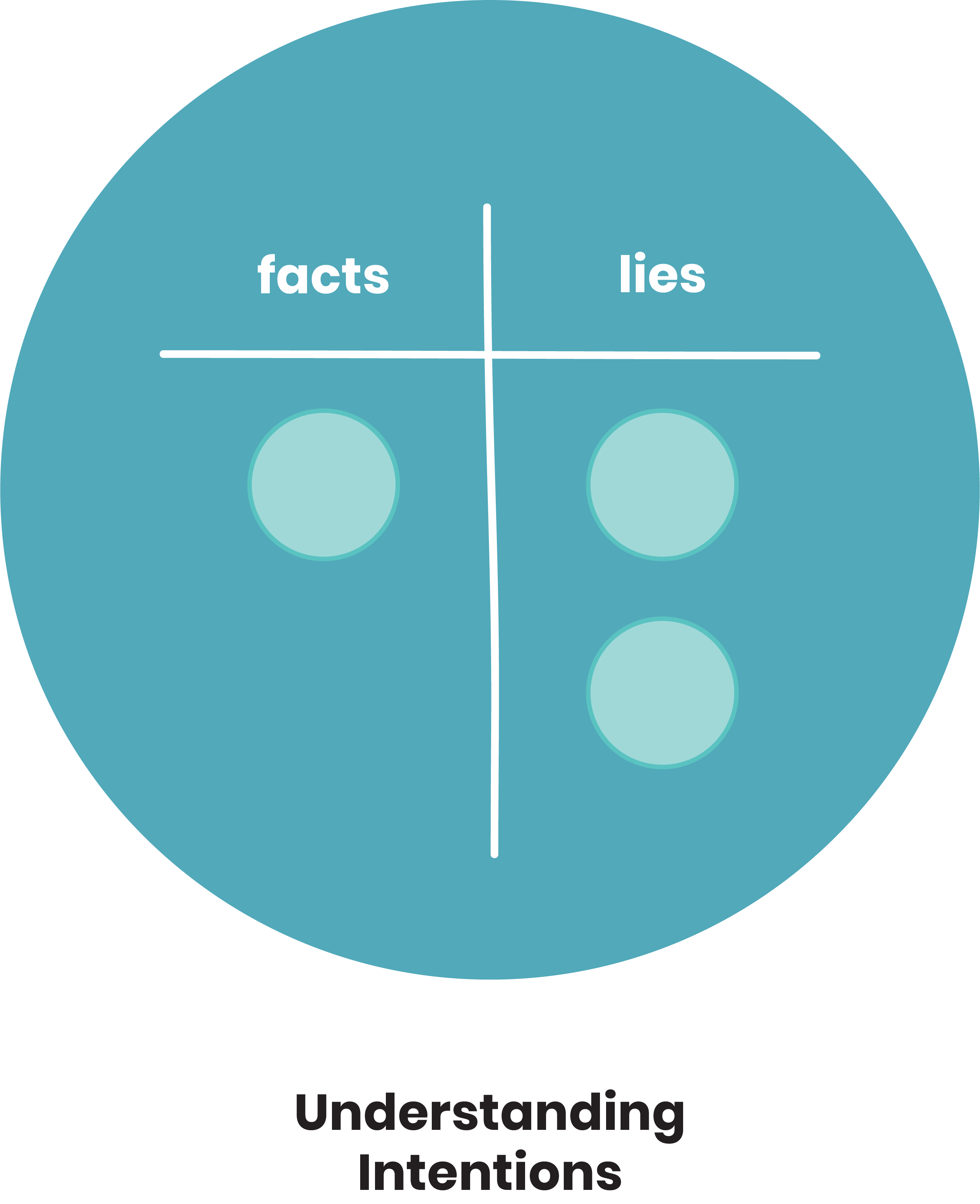
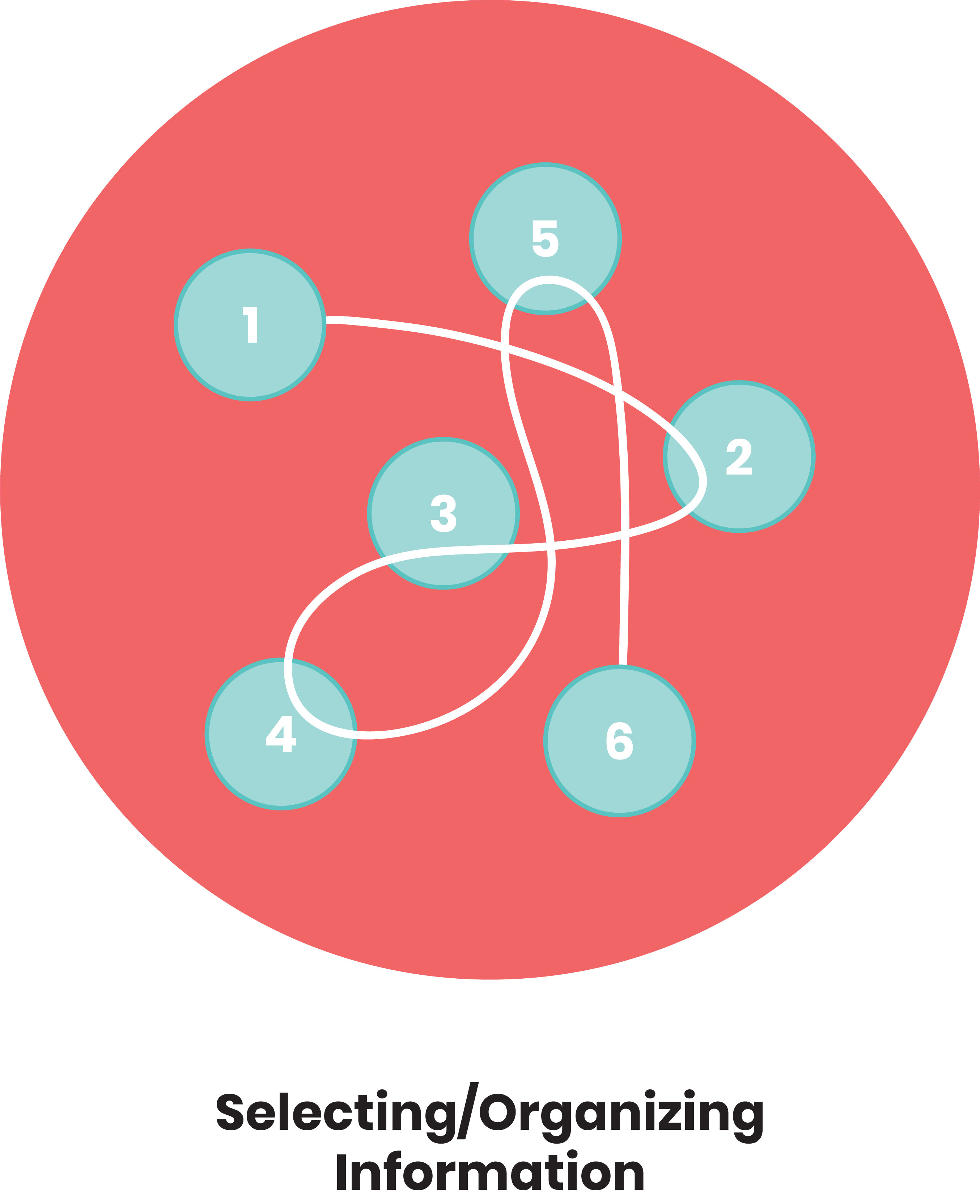

We then took our six personas and decided which specific aspects of social communication they struggled with based on our research.
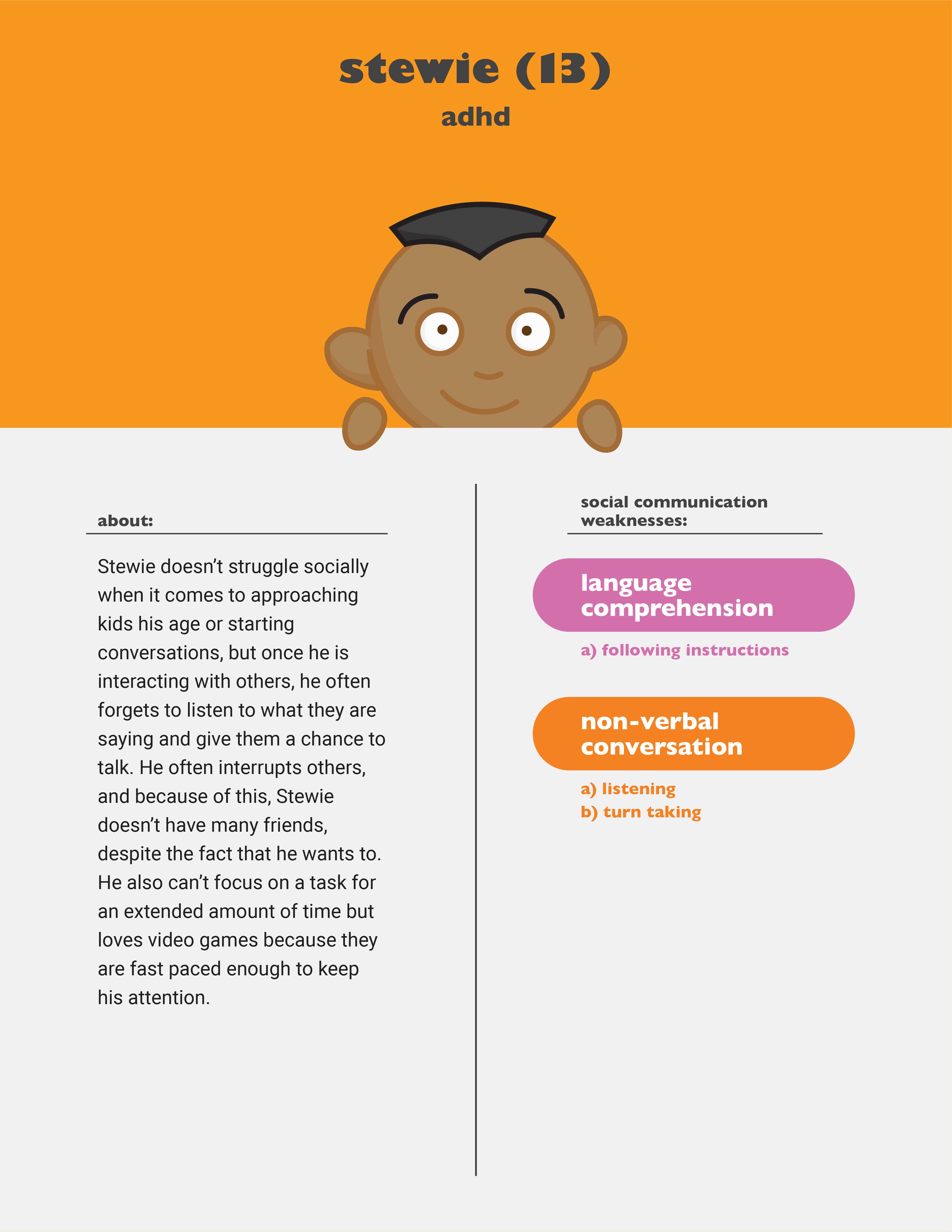
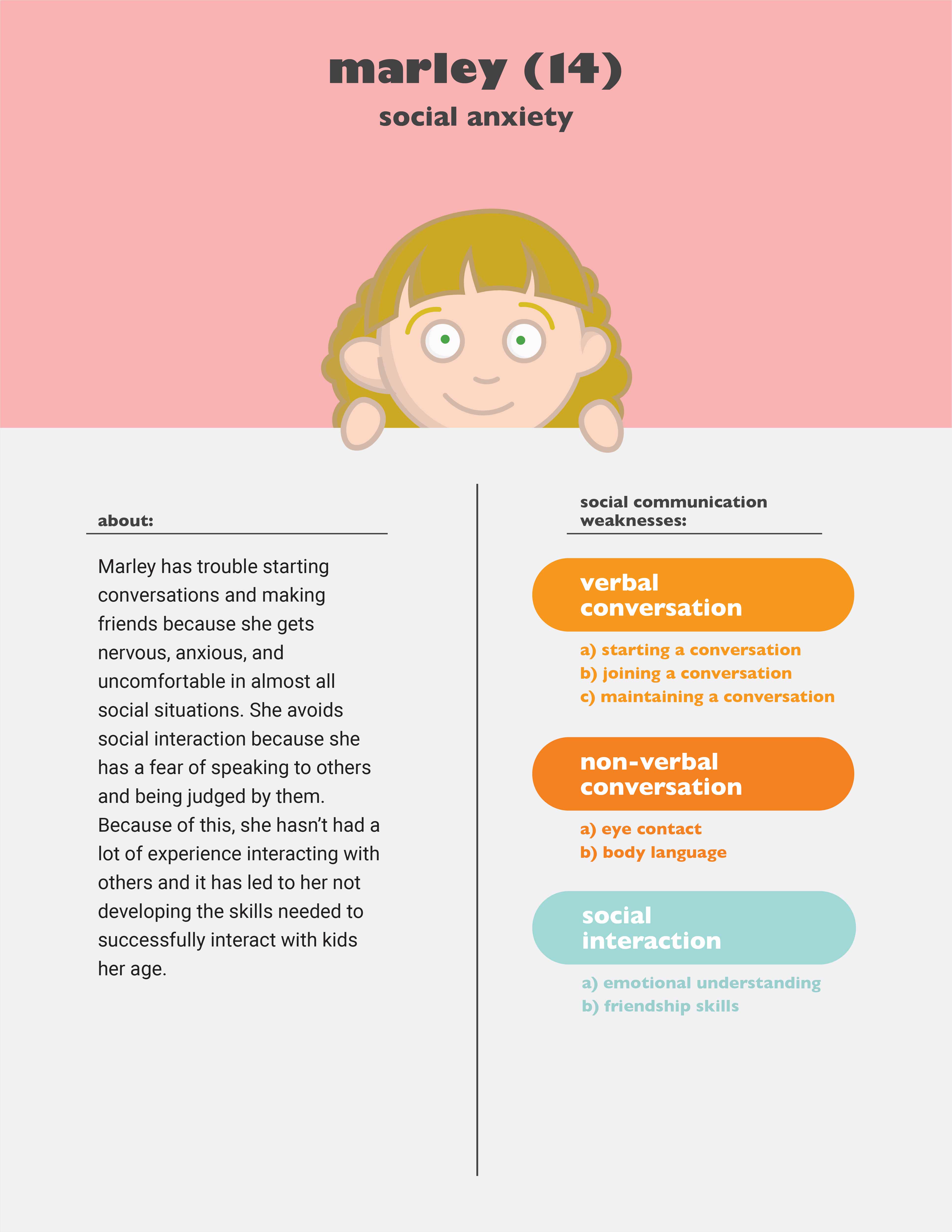
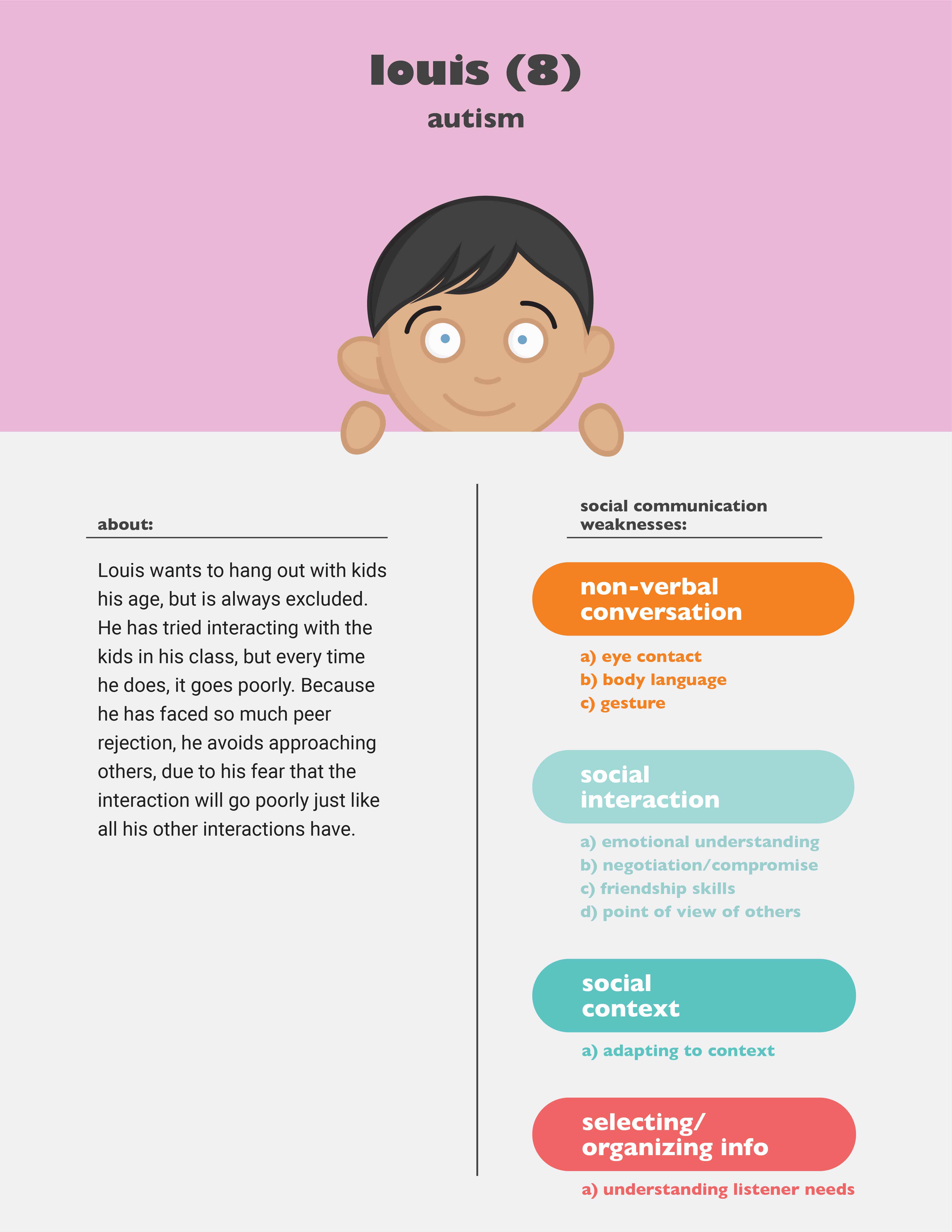

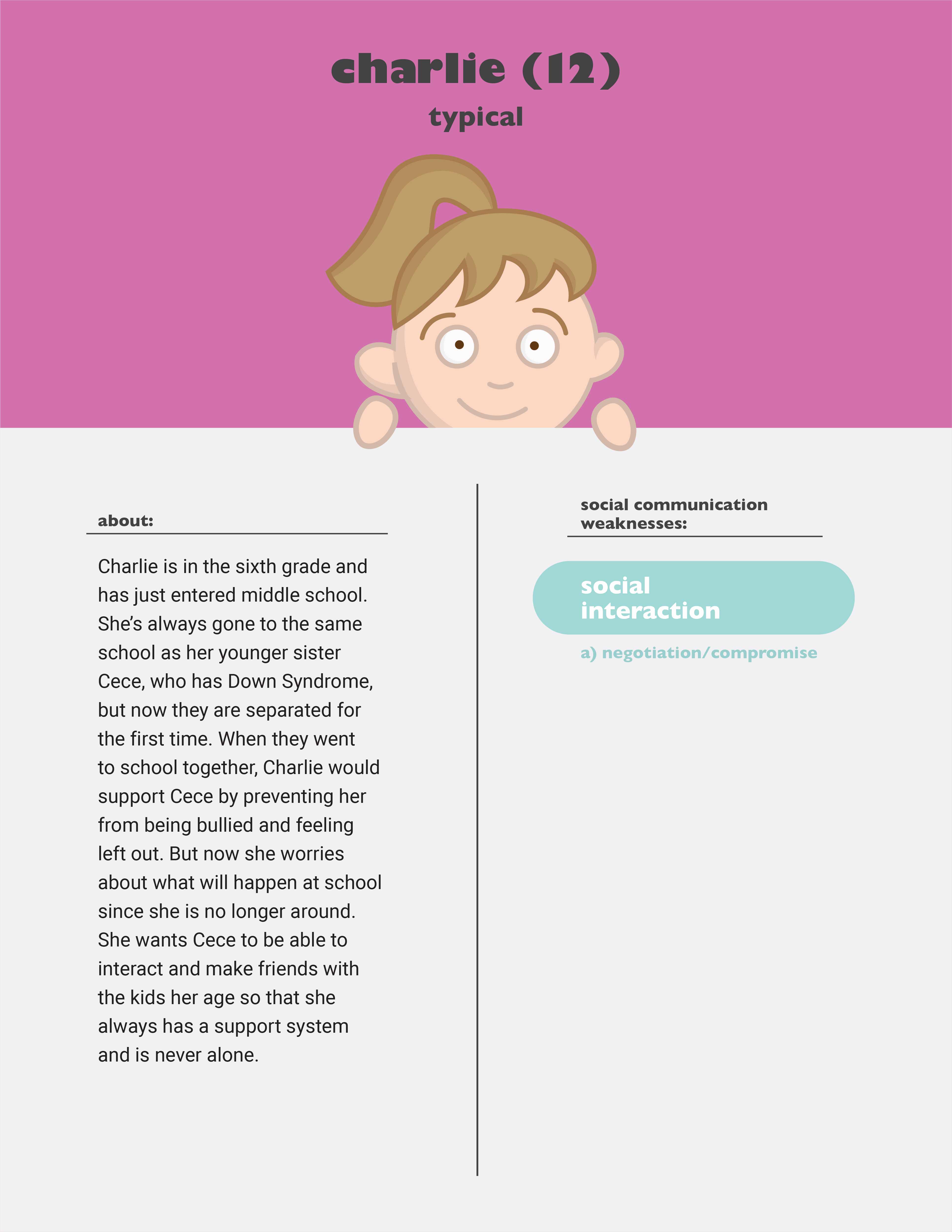
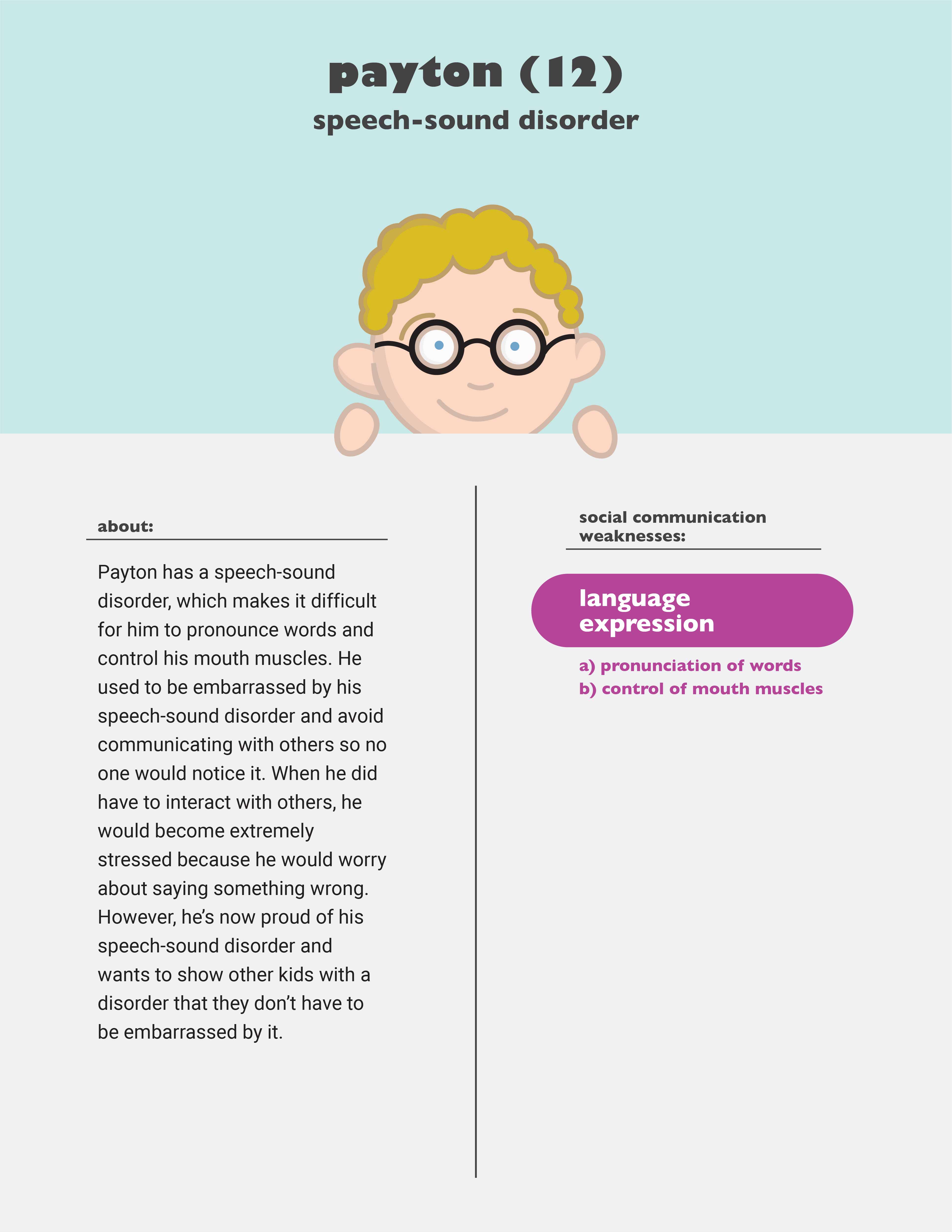

We then began brainstorming ideas for the video game itself. Knowing kids with disabilities are more comfortable when approached with something familiar, we decided to create a video game that reimagined classic childhood games.
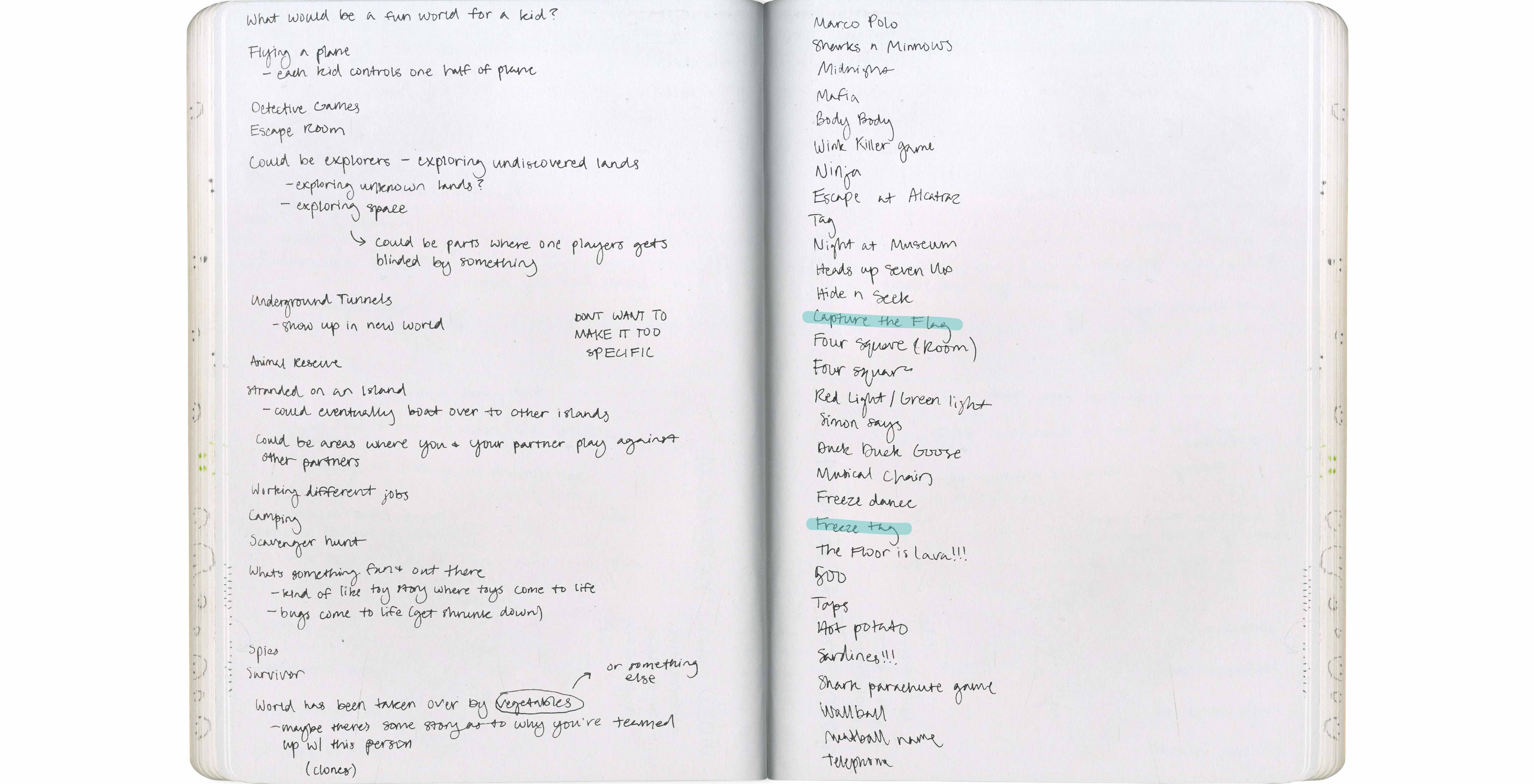

When a player joins Coplay, their avatar is dropped into the game’s lobby. Each hole represents a mini game. Players can choose which mini game they want to play by jumping into it’s designated hole.
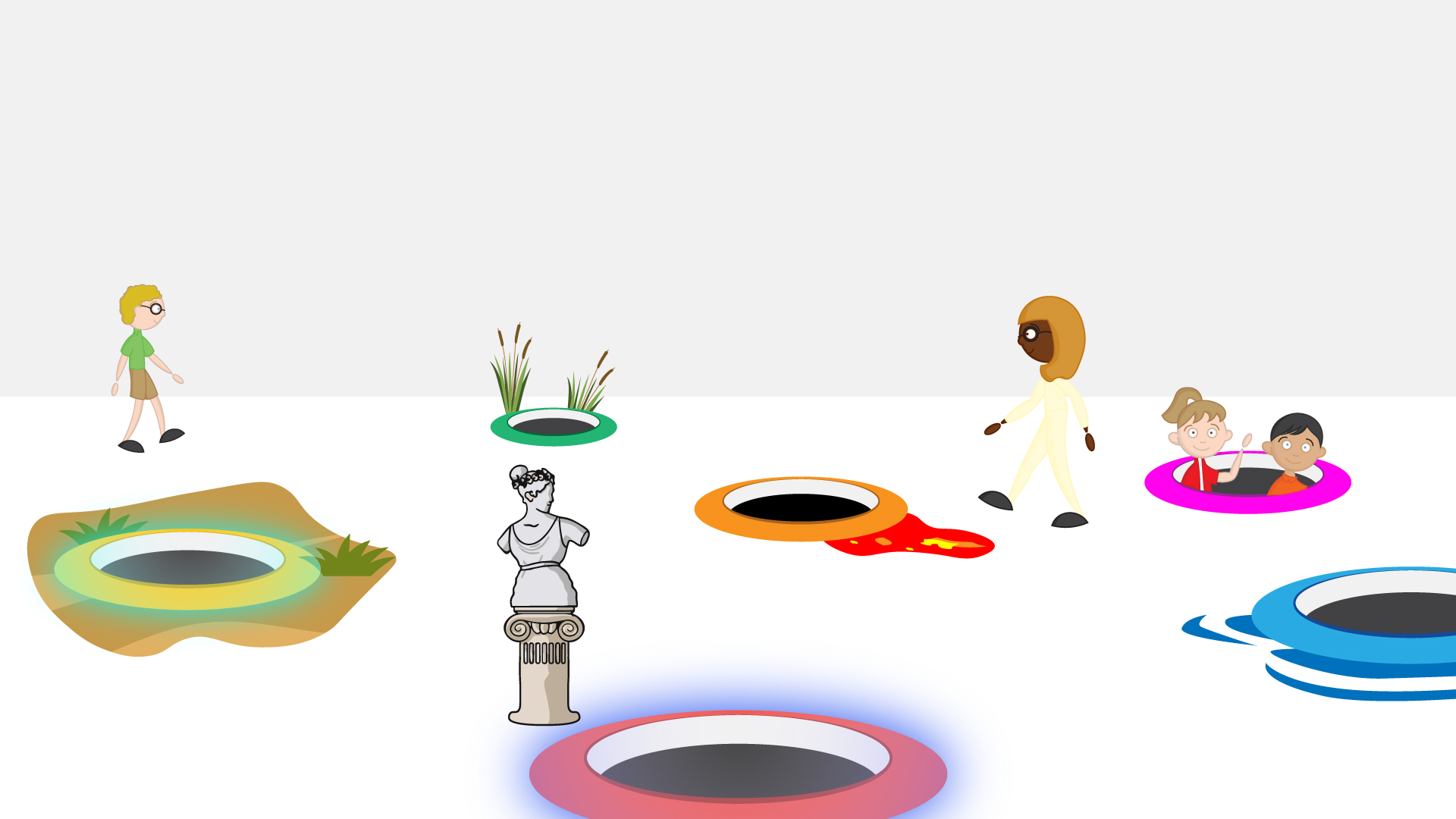
Each mini game is based off the eight communication methods. To compensate for the ranges of abilities playing the game, each mini game is comprised of levels. As the levels increase, the communication aspect of the game gets more difficult. This allows kids with disabilities to play at a level they are socially comfortable with. (Hover over each mini game to learn what it entails)
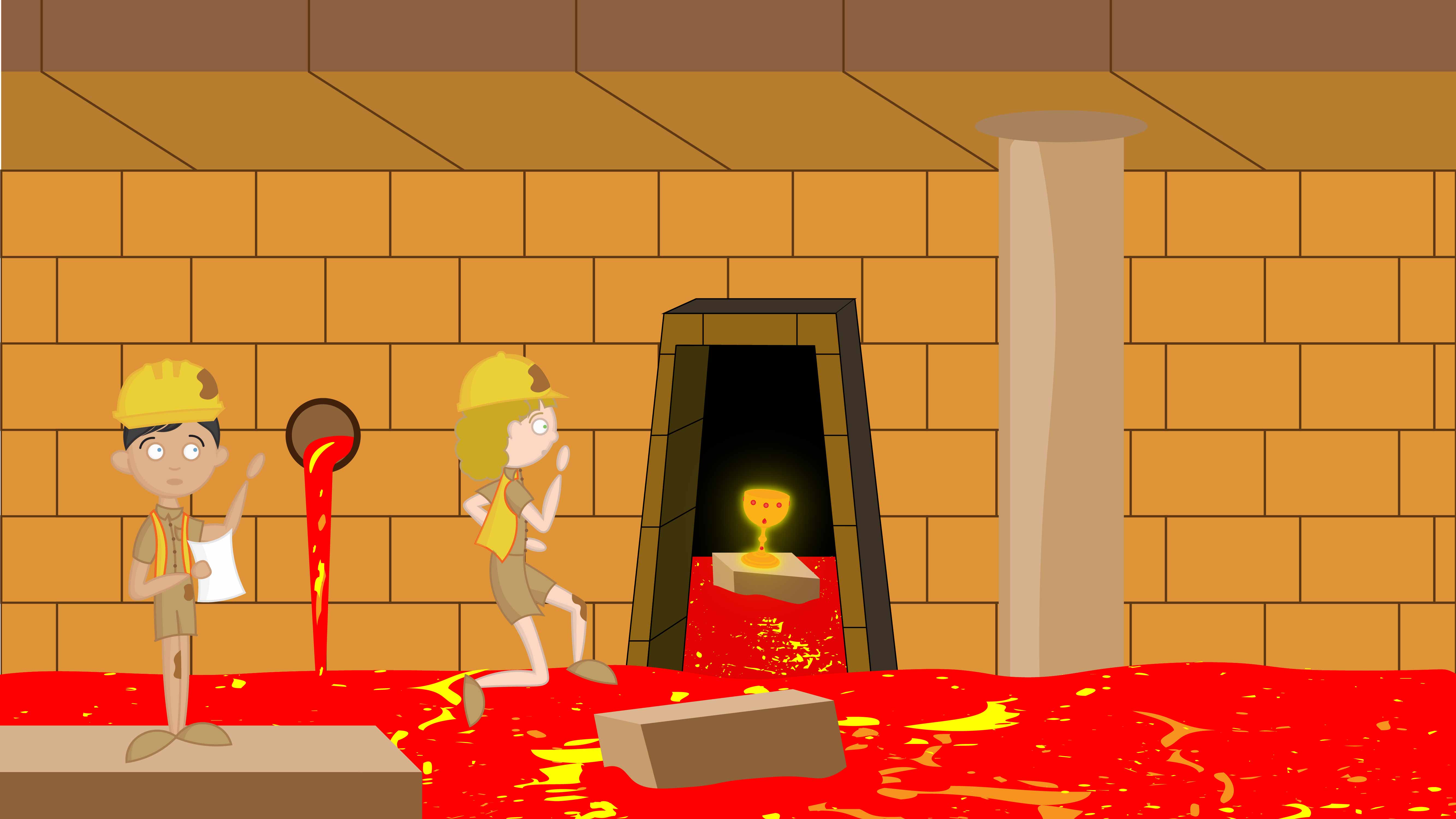
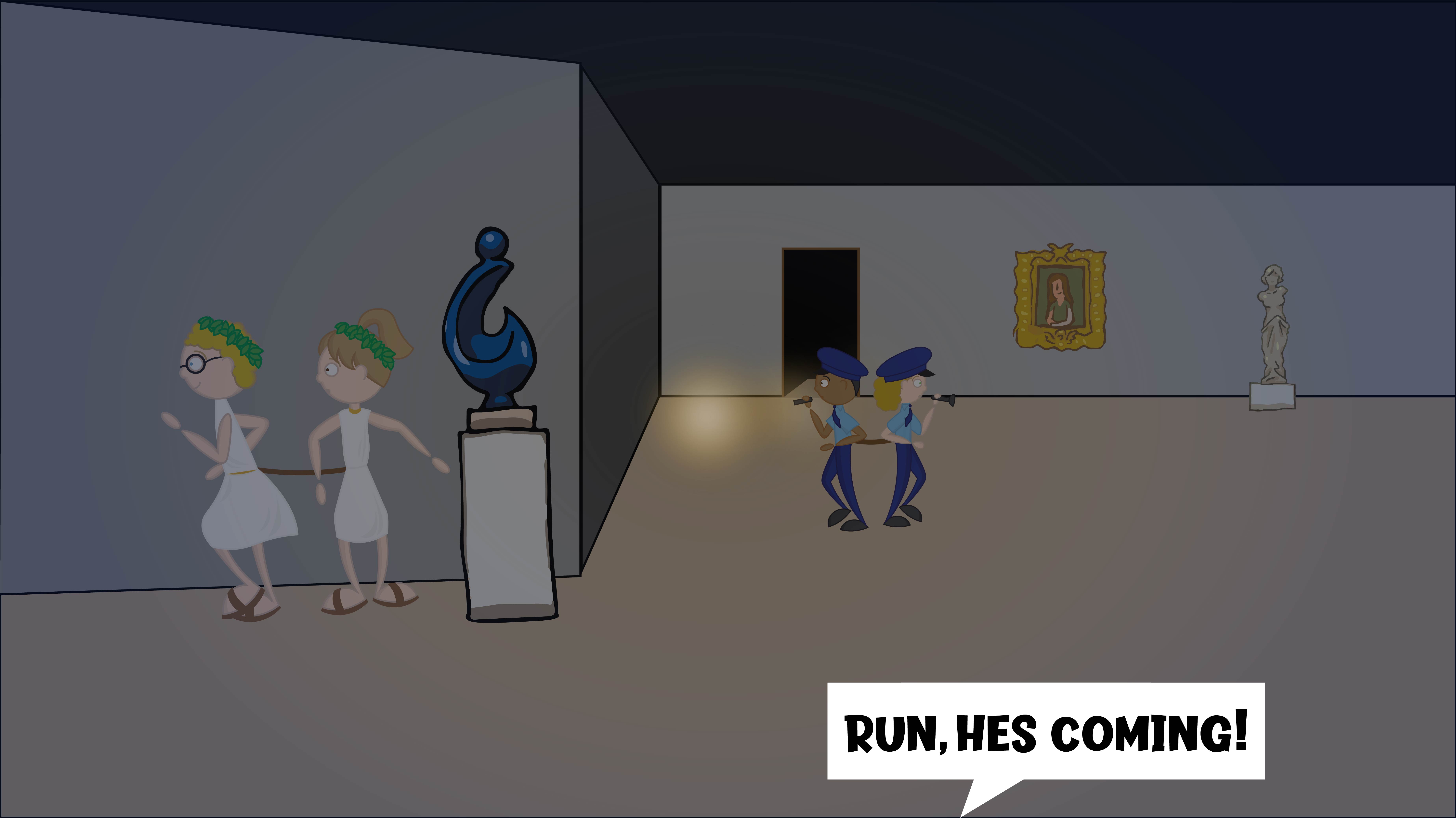

Coplay utilizes voice tracking technology to determine what emotions a child is experiencing as they play. As a child speaks into the game, their linguistic and paralinguistic vocal cues (such as tone, pitch, cadence, volume, and speed) are detected and broken into five emotions: neutral, angry, stressed, sad, and elated.
If the voice tracking technology detects an emotion from a player, their screen will react accordingly. For example, if the game detects a player is angry, their screen will turn red, helping them understand their own emotions.
If the voice tracking technology detects an emotion from a player’s partner, their partner’s avatar will react accordingly. For example, if a player’s partner is sad, their avatar will appear sad, helping kids understand other’s emotions. The avatars can also help kids understand gestures. For example, if a player says “yes,” their avatar will nod it’s head ‘yes’.
Since kids with disabilities struggle making and maintaining friends, Coplay is structured to encourage players to add friends and continue playing with them. As a player continually plays with someone, they will receive checkpoints. For example, once a player plays with a friend 10 times, that friend’s avatar will receive a ribbon and them and their friend will receive an advantage in the next game they play together. Players can also see who their top friends are (aka the people they play with the most).
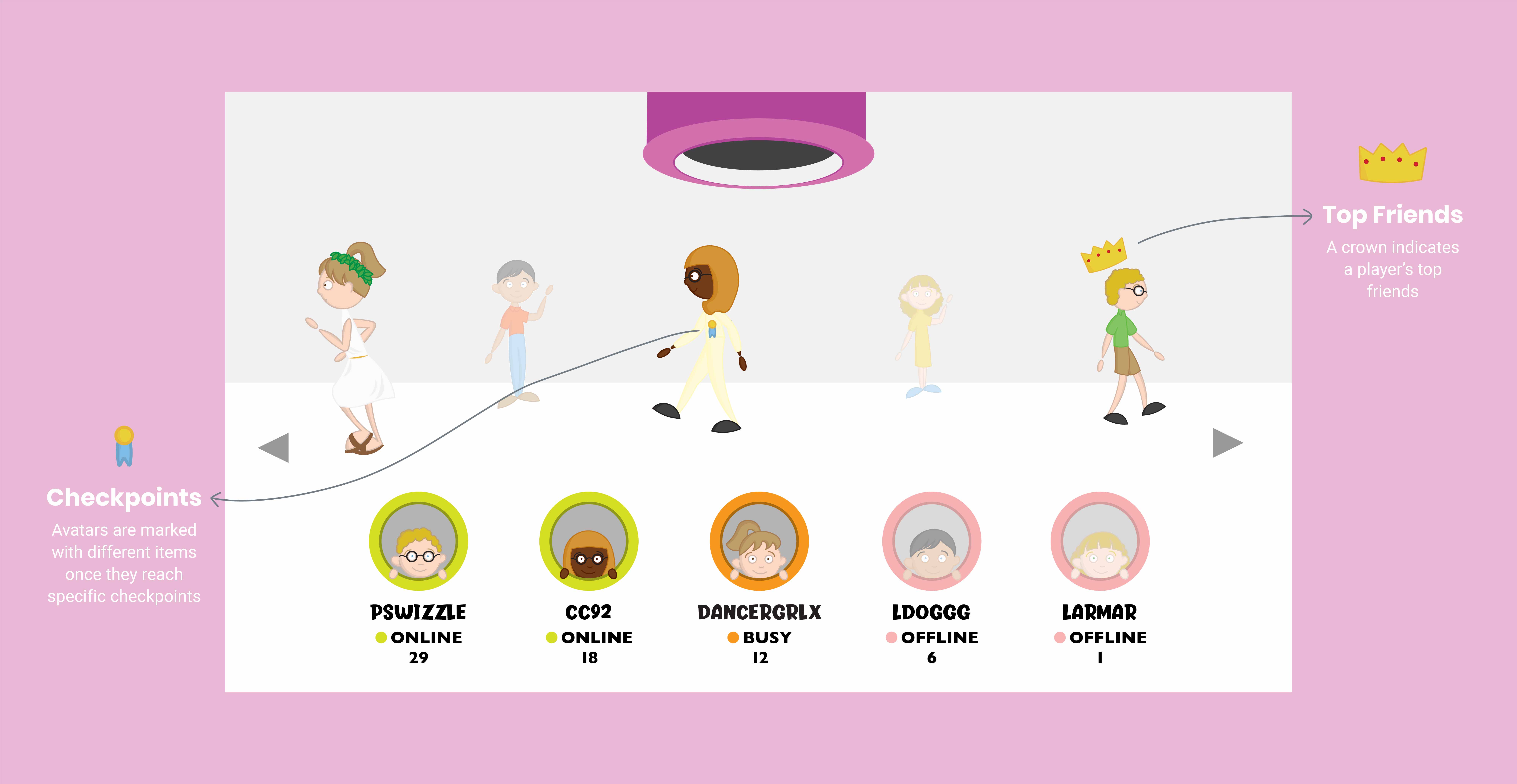
Stewie and Marley are paired randomly in a game of Body Body. As they play, they become aware of the effect they have on one another’s emotions and slowly learn how to effectively communication with one another.
.jpg)
.jpg)
.jpg)
.jpg)
.jpg)
.jpg)
.jpg)
.jpg)
.jpg)
.jpg)
.jpg)
.jpg)
.jpg)
Coplay has a feature allowing parents to select which aspects of social communication their child struggles with the most, and in turn, receive a curated list of mini games beneficial for their child to play.
Parents also have the ability to view their child’s progress in each mini game. They can see how frequently their child plays the game, as well as how often their child contributes to the conversation versus their partner. They can also see how often their child experiences anger, stress, sadness, and joy.
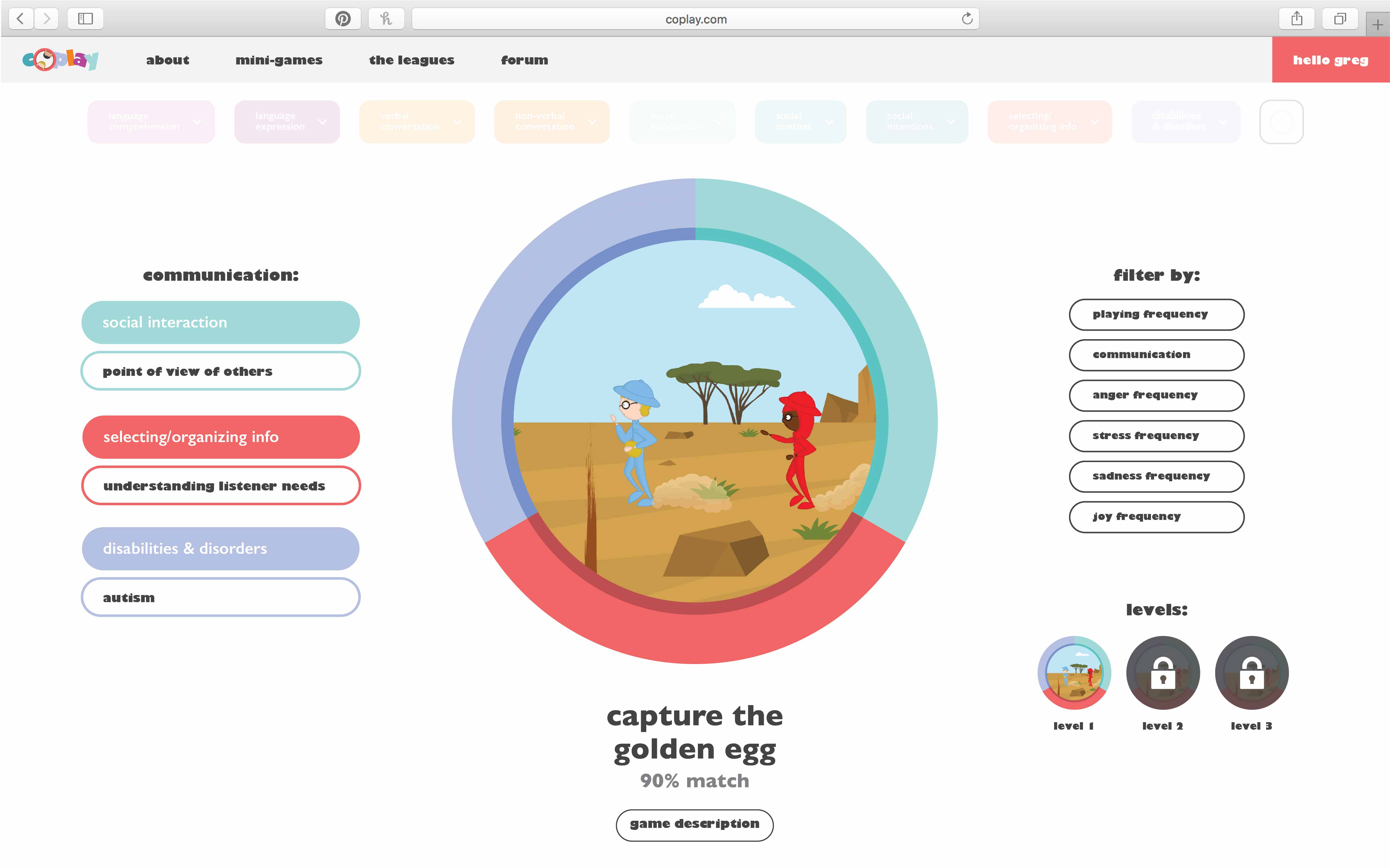
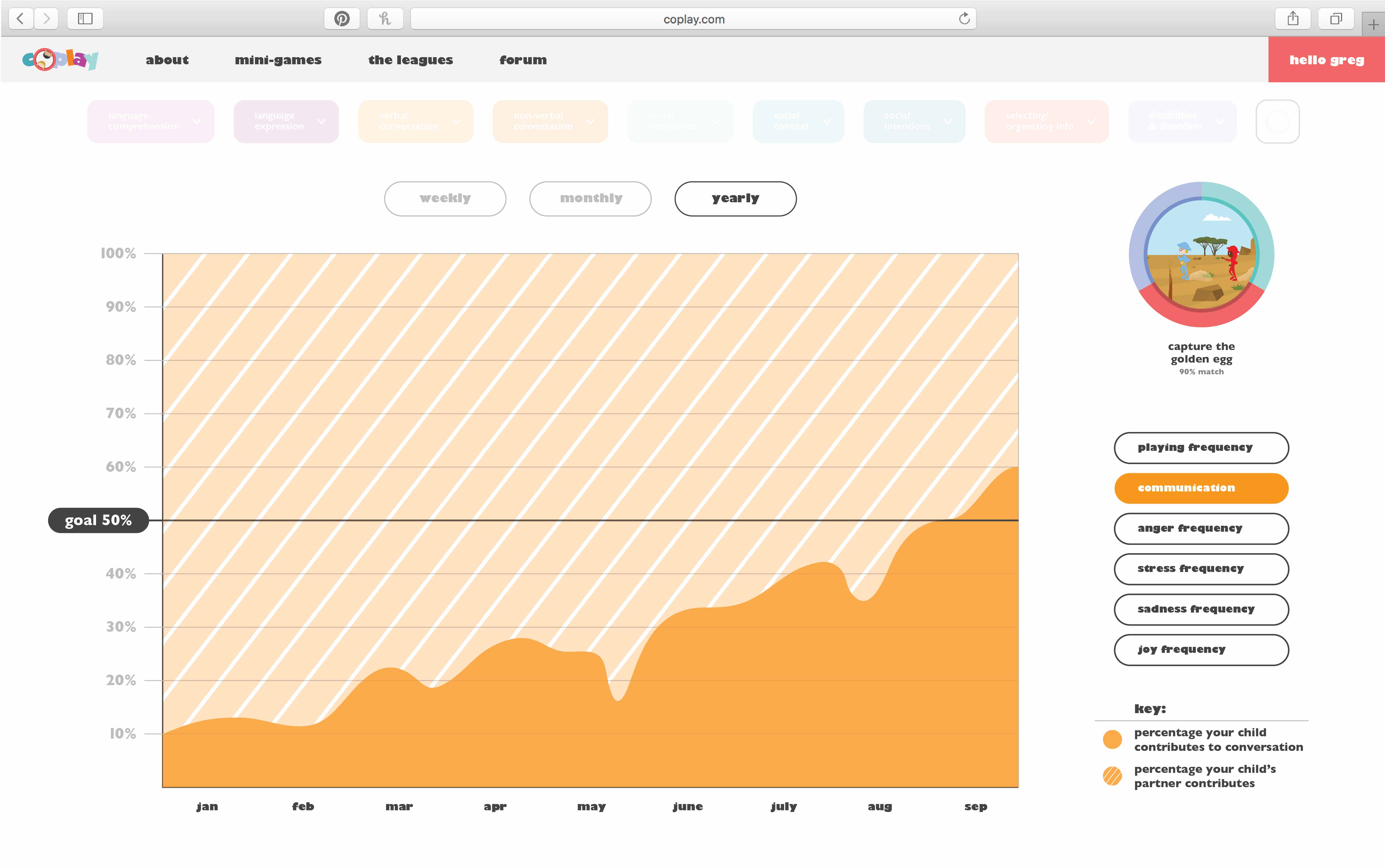
Greg wants to help his son, Louis, make friends, but doesn’t know how. After meeting with Louis’s therapist, Greg learns about Coplay. Greg signs up is able to see which mini games are best for Louis to play, as well as keep track of his progress within each game.
.jpg)
.jpg)
.jpg)
.jpg)
.jpg)
.jpg)
Coplay has a featured called The Leagues which allows players to compete in physical versions of the mini games. Players enter The Leagues with a partner and are randomly paired with six other players to complete their team of eight. Each player competes with a member of their team in two different mini games and the teams with the most points advance.
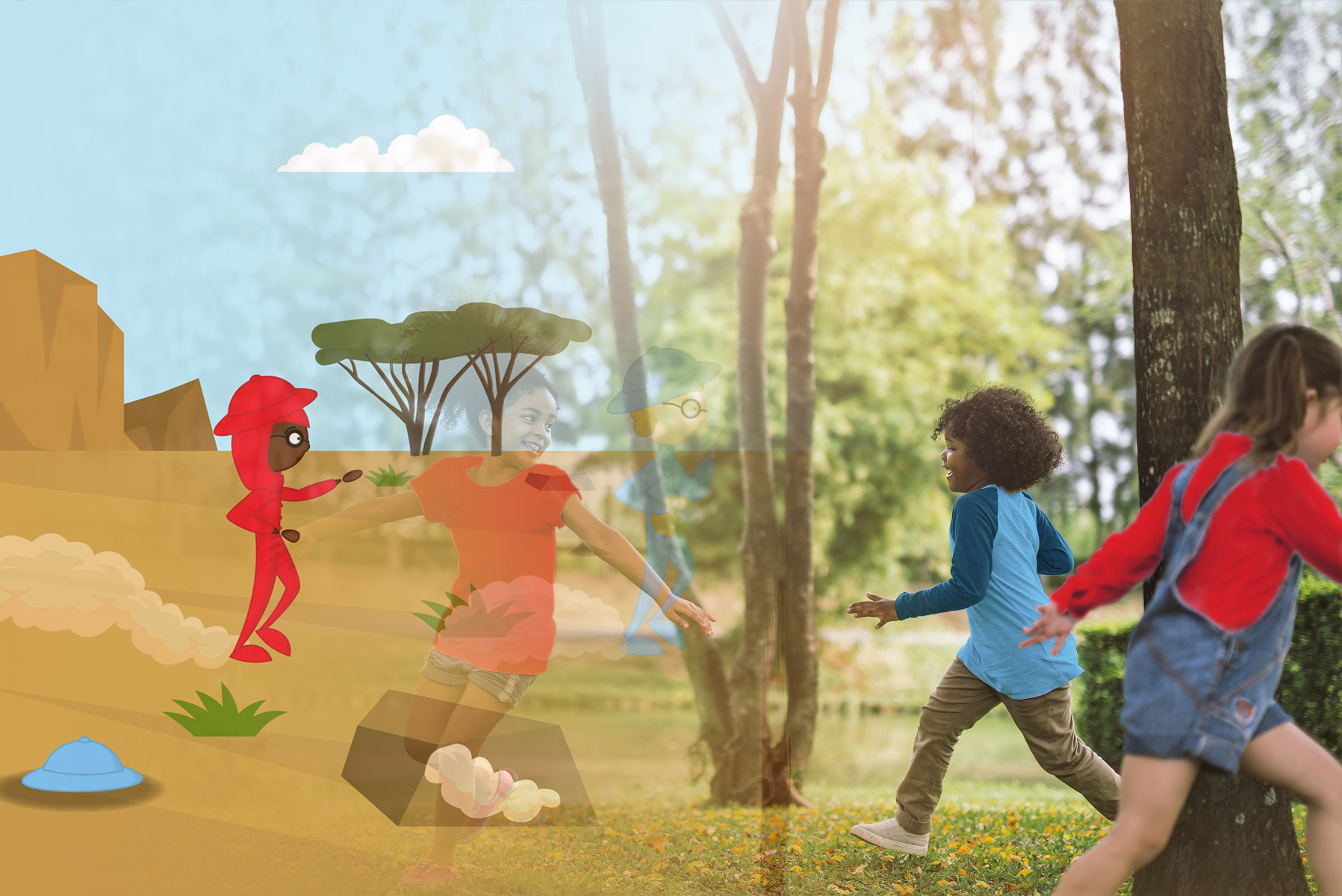
Each year, eight new mini games are released with The Leagues. The mini games revolve around the year’s theme and only players signed up for the Leagues have the ability to play them.
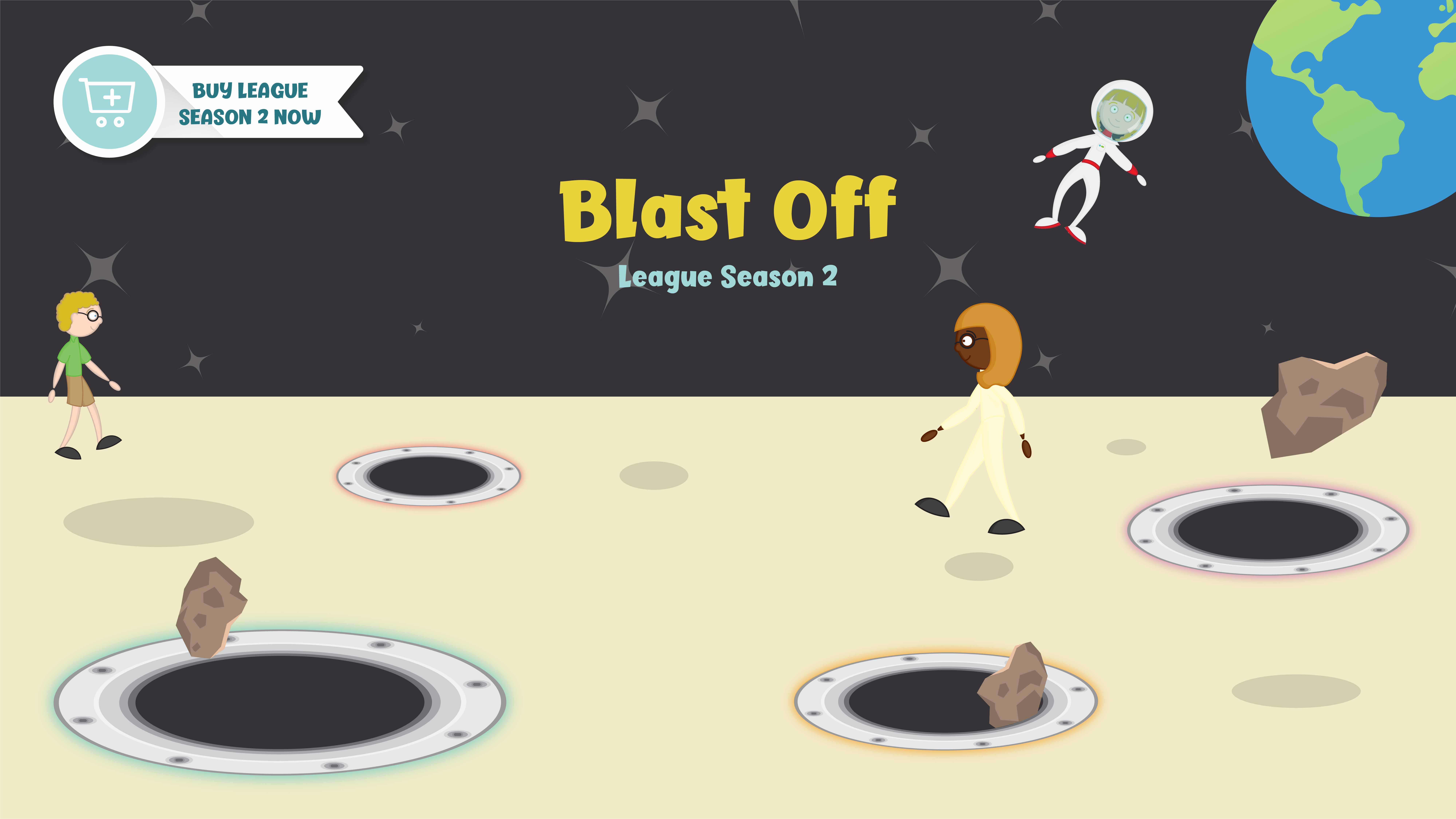
Charlie worries about her sister, Cece, who gets bullied at school. Charlie is excited Coplay is helping her sister learn and meet new friends, but she wants to encourage her to do more. Charlie joins The Leagues with Cece, hoping Cece will meet new friends and be comfortable interacting with them in person.
.jpg)
.jpg)
.jpg)
.jpg)
.jpg)
.jpg)
Coplay has ambassadors that represent the video game as well as kids of different abilities. If kids are able to see someone with their disability playing Coplay, they will feel empowered to do the same. The ambassadors also assist at The Leagues by providing commentary and conducting interviews.
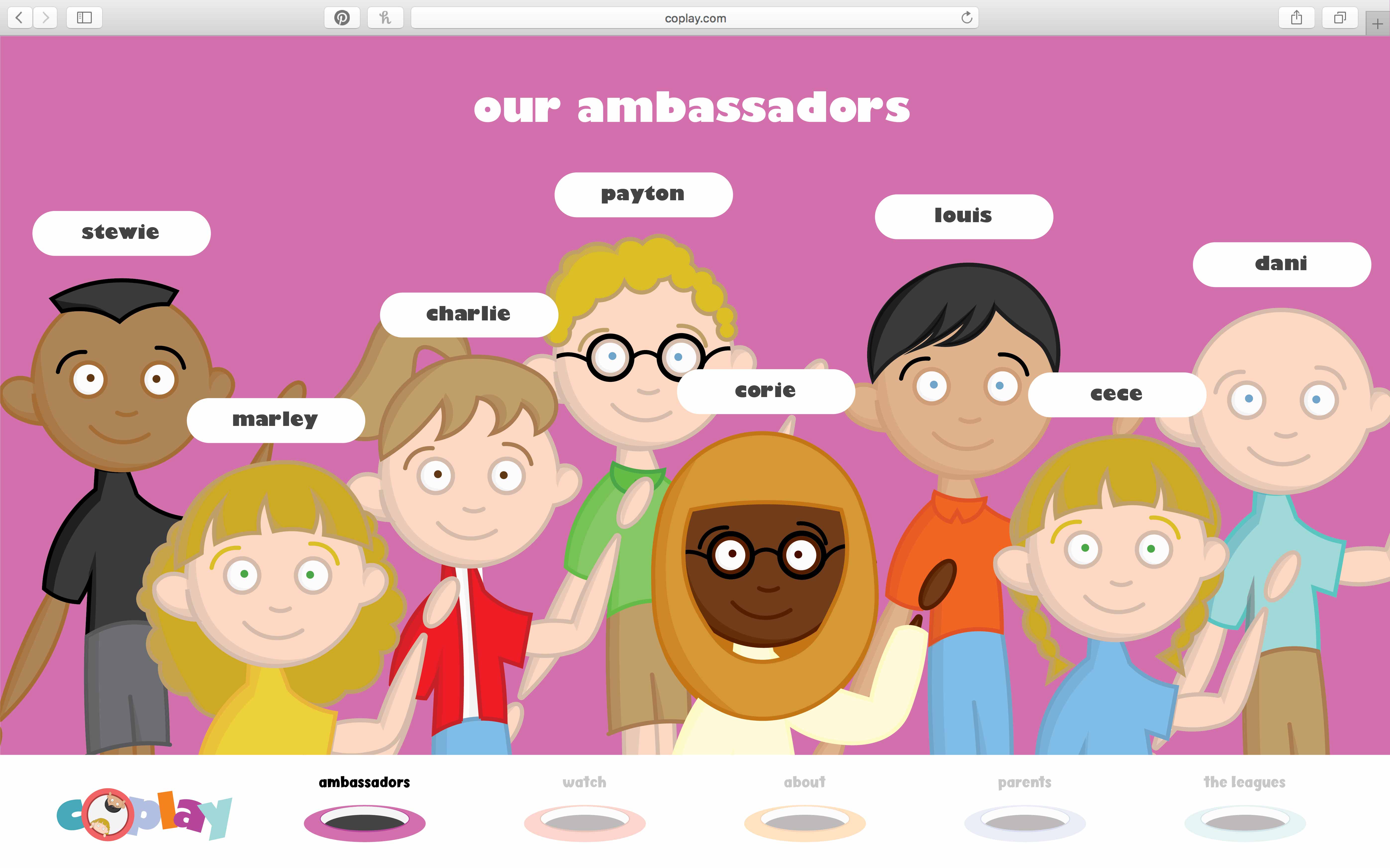
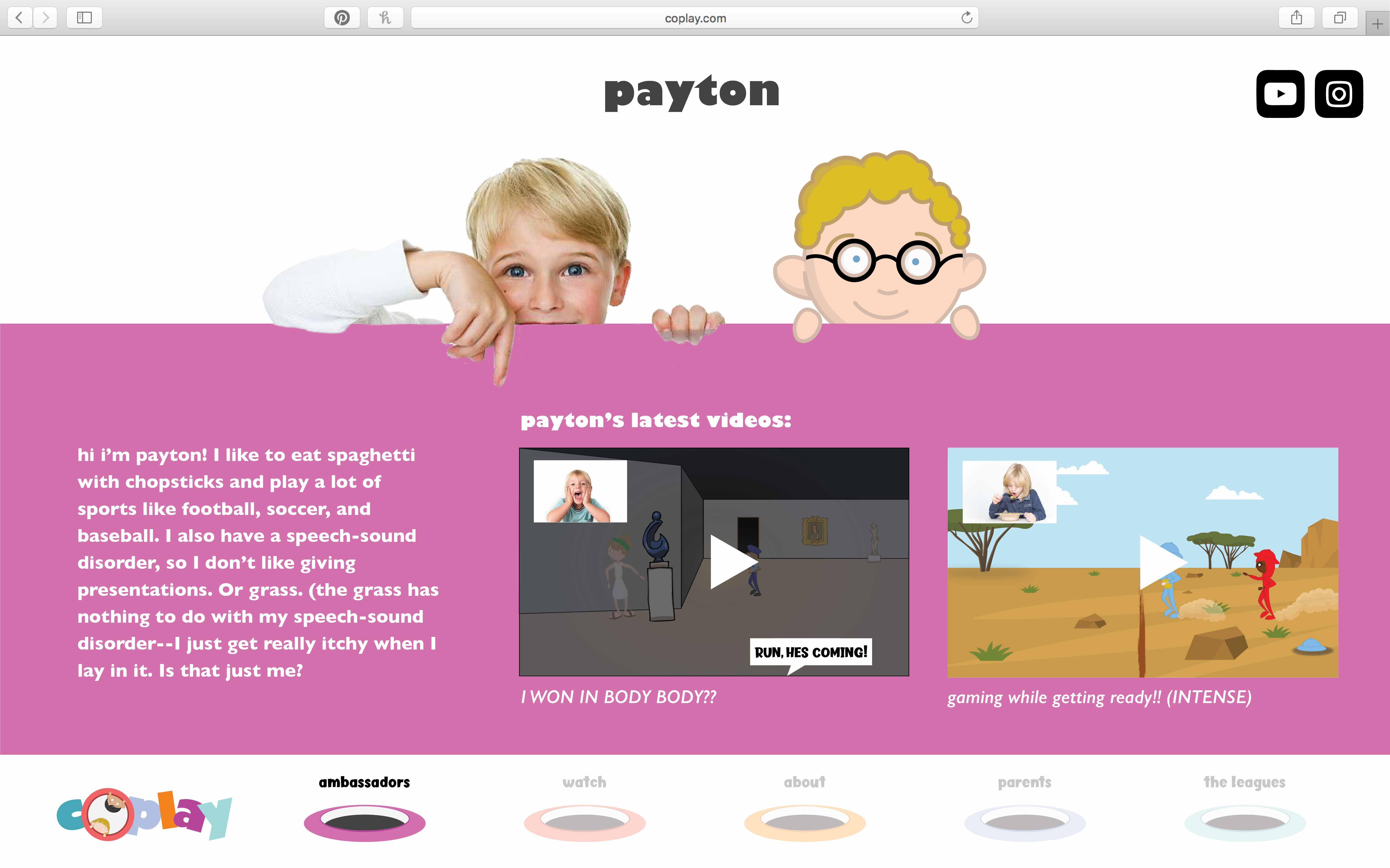
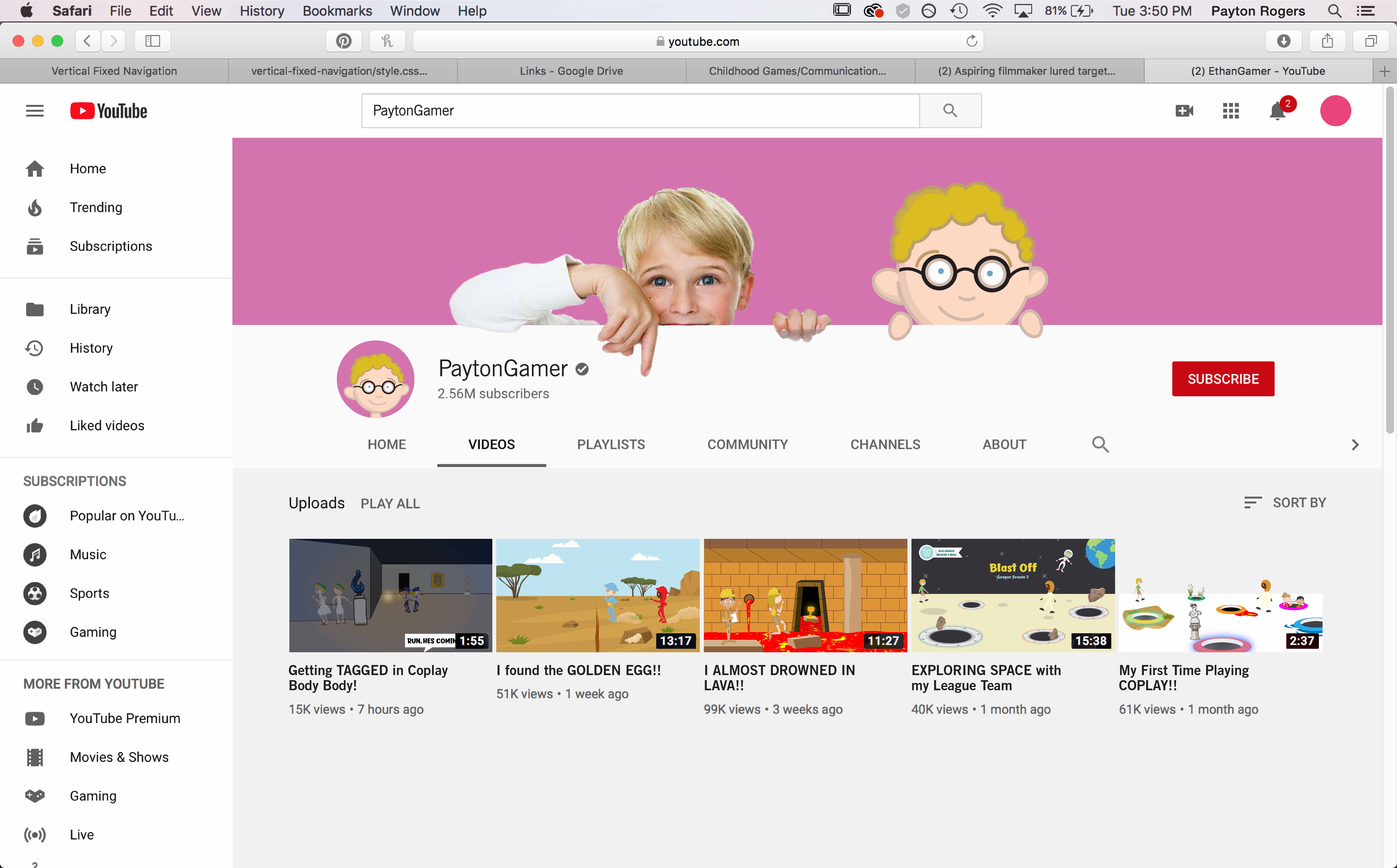
Video documenting the negative experiences a child with social communication problems can have, as well as how Coplay can be used to improve these experiences.
